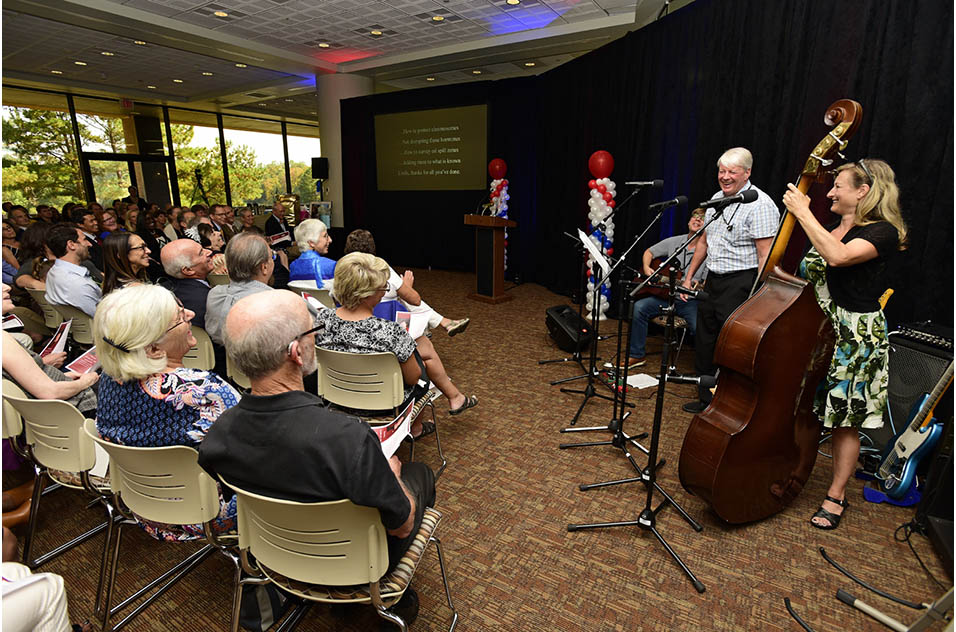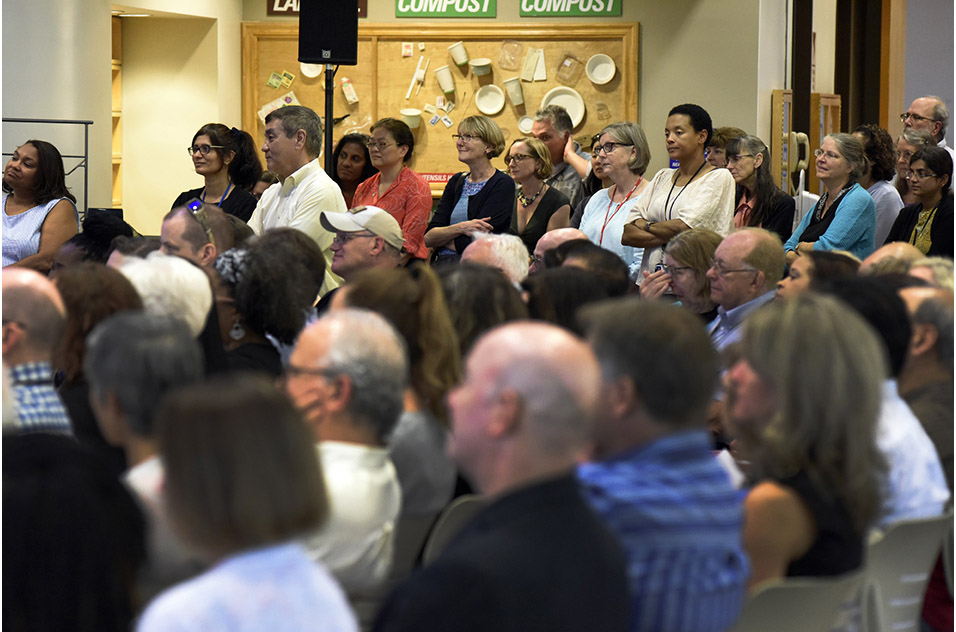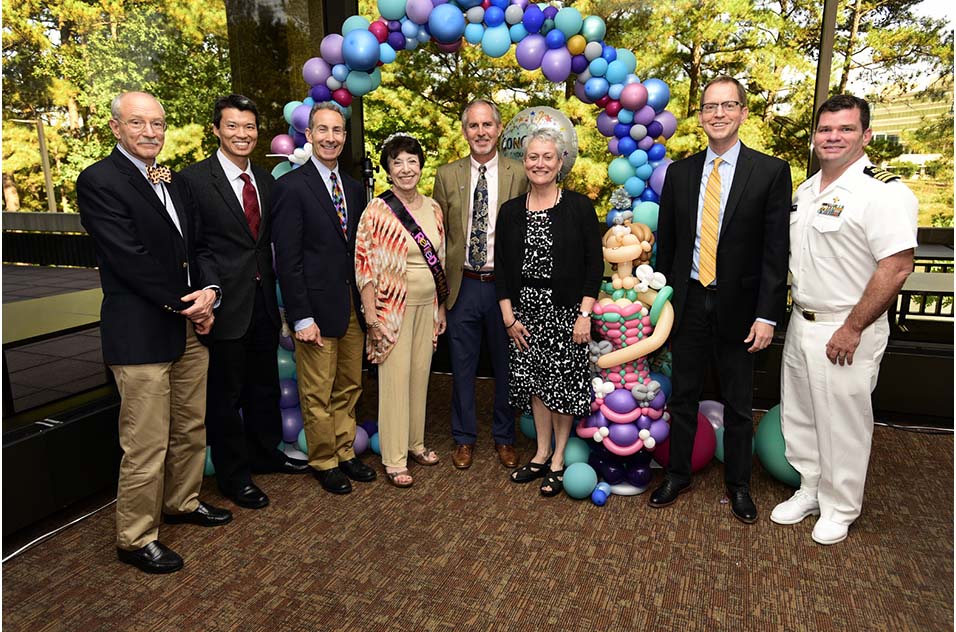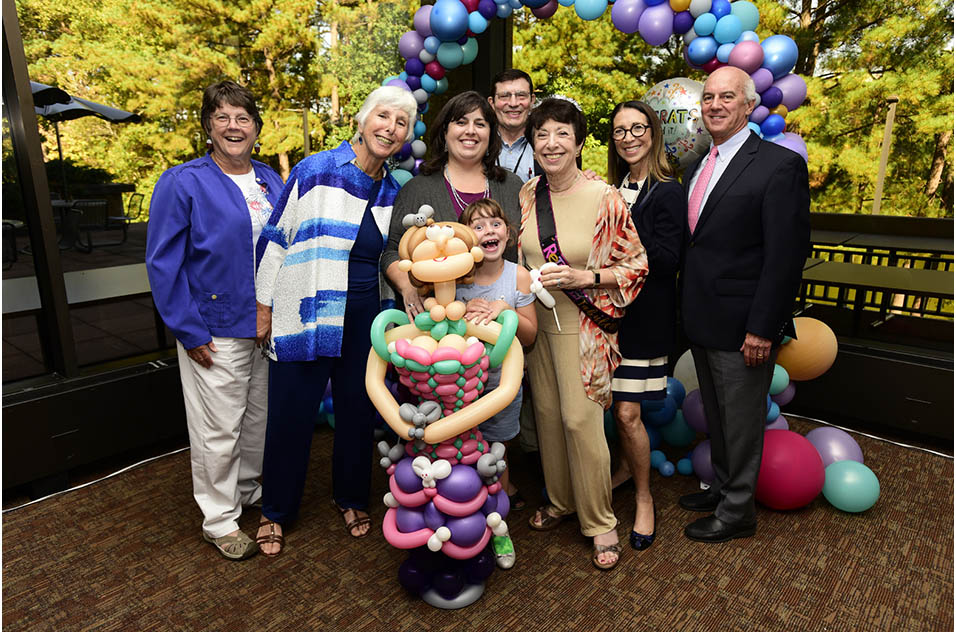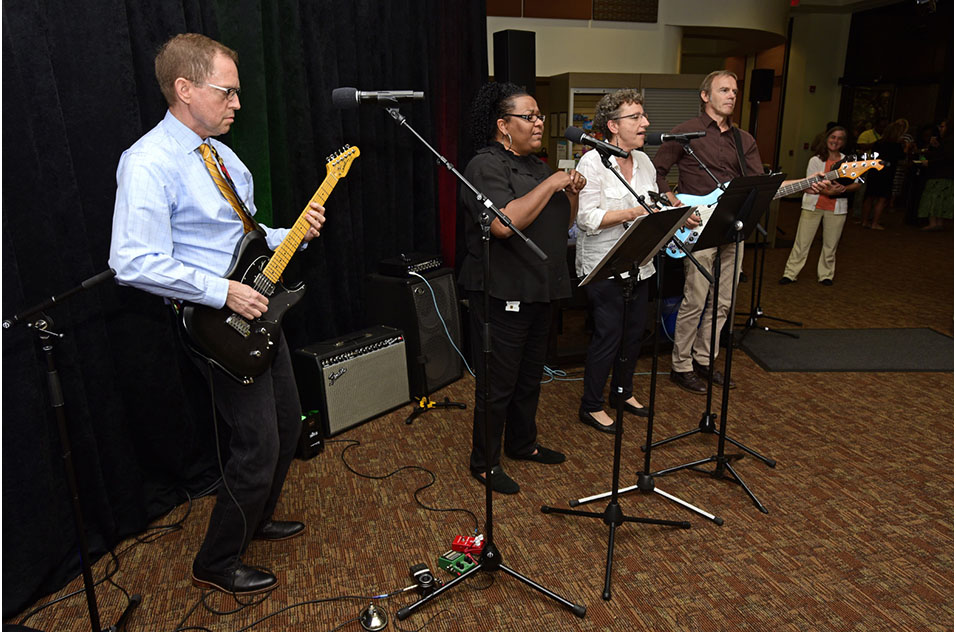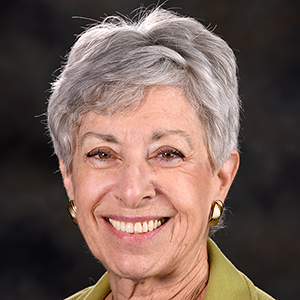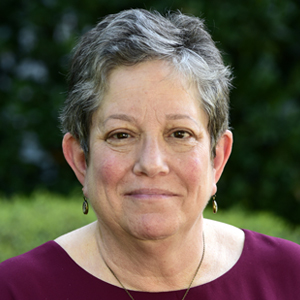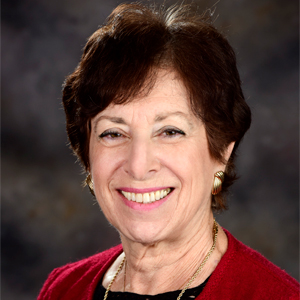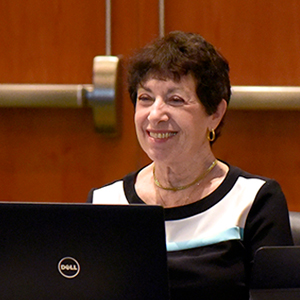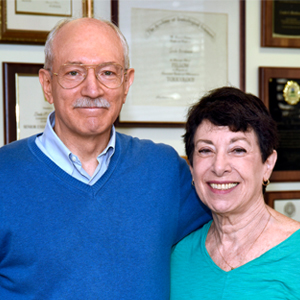Family, friends, and colleagues packed the room Oct. 3 to celebrate the career and leadership of Linda Birnbaum, Ph.D., as she retired after 40 years as a federal scientist, including 10 years as director of NIEHS and the National Toxicology Program (NTP).
The celebration followed one on Sept. 12, hosted by National Institutes of Health (NIH) Director Francis Collins, M.D., Ph.D., in Bethesda, Maryland. And on Sept. 24 Congressman David Price, Ph.D., hosted a Capitol Hill event, organized by the Friends of NIEHS.
So it made sense for Acting Director of NIEHS and NTP Rick Woychik, Ph.D., to call it Birnbaum’s grand finale event. Although Collins was not able to attend the event in person, a group of musicians from the institute performed “Linda B,” the song he wrote and originally performed for Birnbaum in Bethesda.
One more event is in the works. In an upcoming issue, Environmental Factor will announce an international scientific symposium, to recognize Birnbaum’s scientific contributions. The meeting is planned for spring 2020.
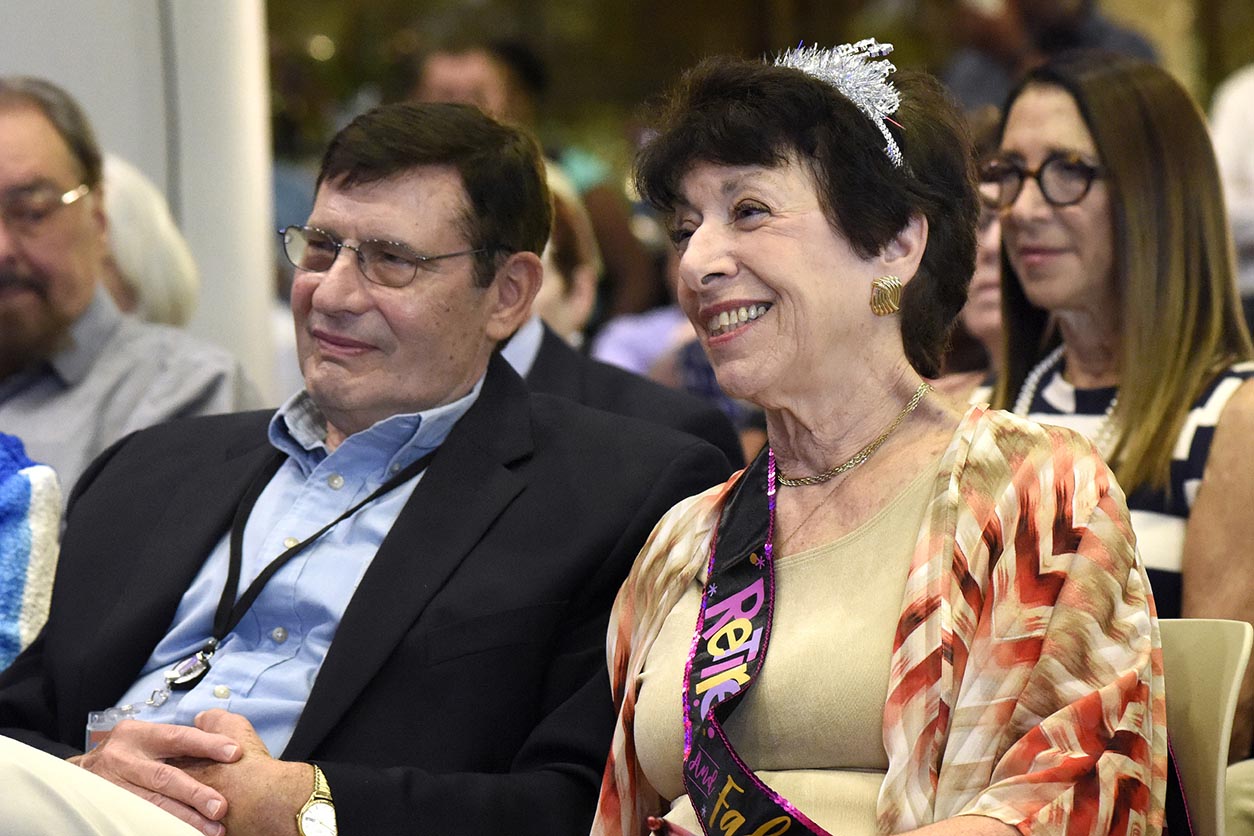 Birnbaum, right, spoke of how her husband, David Birnbaum, Ph.D., left, was a stalwart support throughout her career. (Photo courtesy of Steve McCaw)
Birnbaum, right, spoke of how her husband, David Birnbaum, Ph.D., left, was a stalwart support throughout her career. (Photo courtesy of Steve McCaw)Tribute from Tabak
NIH Deputy Director Larry Tabak, D.D.S., Ph.D., focused on characteristics that contributed to Birnbaum’s success as a scientist and leader. He said she is prolific, creative, flexible, a good mentor, and tenacious. “Nothing will dissuade Linda Birnbaum from her mission of discovering how the environment affects people, in order to promote healthier lives,” said Tabak, quoting from the NIEHS Strategic Plan.
“She energizes and inspires us to seek that passion that brought us to science to begin with,” he said. Tabak shared figures on publications, citations, and other data that provided one measure of the importance of Birnbaum’s scientific work.
 Tabak described Linda as a tenacious advocate for environmental health, a prolific scientist and author, as well as a world-class mentor to others around her. (Photo courtesy of Steve McCaw)
Tabak described Linda as a tenacious advocate for environmental health, a prolific scientist and author, as well as a world-class mentor to others around her. (Photo courtesy of Steve McCaw)The presence of family members brought Birnbaum’s life outside the institute to the forefront. Her sister Sue Silber, J.D., described the comradery and strong connections among members of their extended family. She noted that Birnbaum was mother, grandmother, wife, sister, aunt, and great-aunt. “She has quite miraculously balanced these roles with that of institute director,” Silber said.
Whole greater than sum of parts
Among the accomplishments that Woychik listed was guiding the first NIEHS strategic plan — “before the rest of NIH was directed to do so.” He said Birnbaum held to a vision of one NIEHS, “not five divisions in silos.”
Using what Tabak called creativity, Birnbaum led important projects in ways that drew not only from across the institute, but across NIH. Such efforts included developing the GuLF STUDY and the NIH Disaster Research Response program, which grew out of the oil spill experience; responding to West Virginia’s Elk River chemical spill; and opening the NIEHS Clinical Research Unit on its campus in North Carolina.
Woychik noted other achievements, such as diversifying the ranks of tenure-track researchers, and keeping the institute at the forefront of emerging contaminant research so that it is a trusted source of information, for example, on per- and polyfluoroalkyl substances (PFAS). He noted Birnbaum’s support for bringing cutting edge technologies like Cryo-EM and predictive toxicology to the institute.
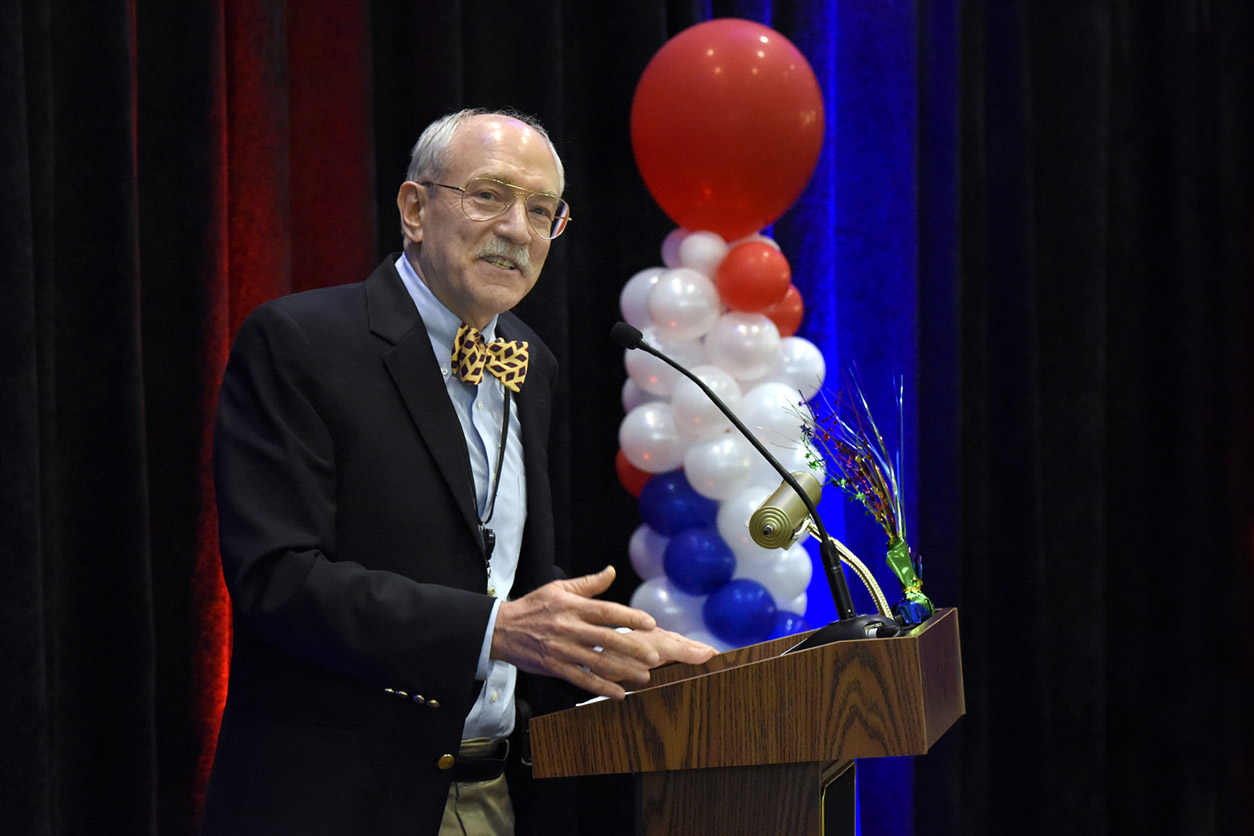 Woychik emceed the celebration. (Photo courtesy of Steve McCaw)
Woychik emceed the celebration. (Photo courtesy of Steve McCaw)In the words of Jennifer Orme-Zavaleta, Ph.D., a long-time colleague and friend who works at the U.S. Environmental Protection Agency, Birnbaum was “always focused on public service and protection of public health.”
Champion and inspiration, doing what she loves
Carol Kwiatkowski, Ph.D., from the Endocrine Disruptor Exchange, said she moved her organization from Colorado to North Carolina to be closer to what she called a hotbed of environmental health science. “Dr. Birnbaum champions environmental health with passion, articulateness, and scientific accuracy,” said Kwiatkowski.
Closer to home, Veronica Robinson, from NTP, as well as the local chapter of Blacks in Government, spoke of Birnbaum’s impact around the halls of the institute. “I have watched the way you do what you do, and you have been an inspiration,” she said.
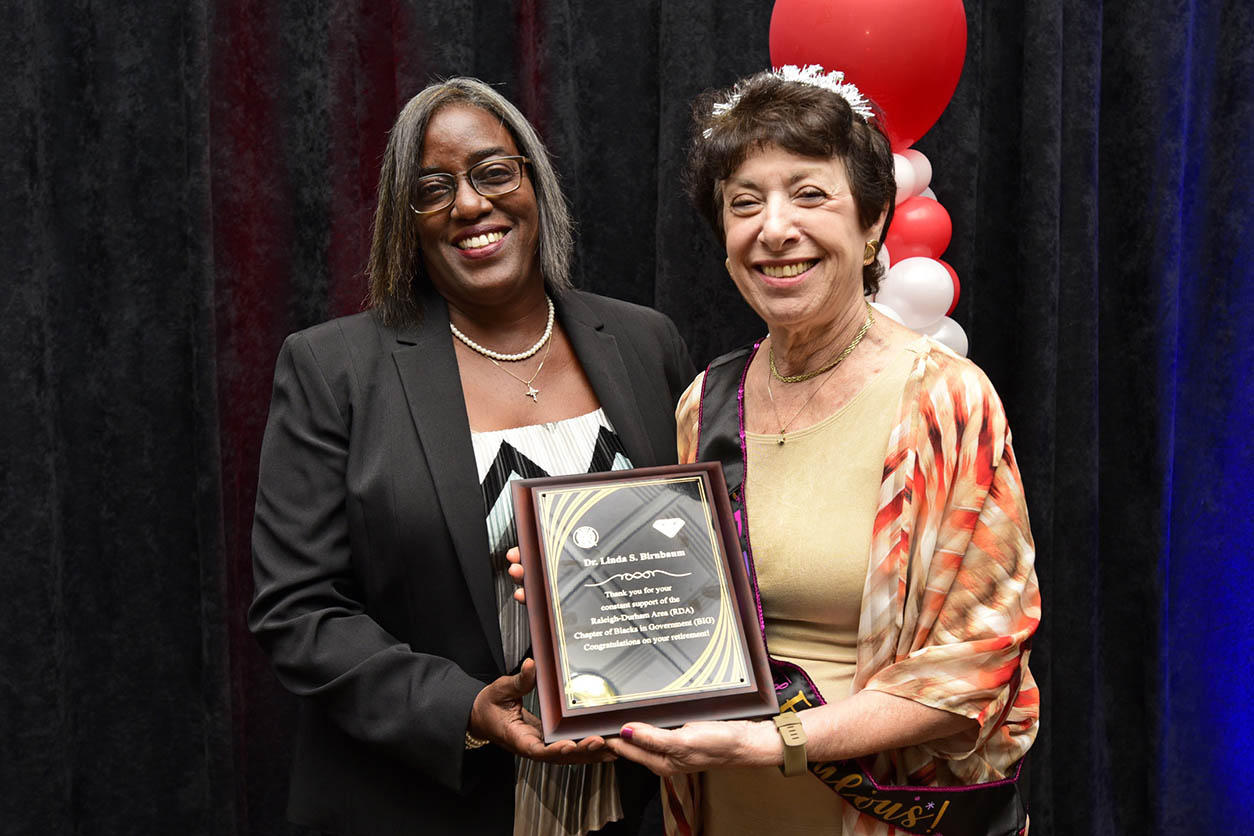 Robinson, left, presented Birnbaum with a plaque in thanks from the local chapter of Blacks in Government. (Photo courtesy of Steve McCaw)
Robinson, left, presented Birnbaum with a plaque in thanks from the local chapter of Blacks in Government. (Photo courtesy of Steve McCaw)Inspiration was just one of the themes repeated in a montage of video clips made by staff across the institute. Other themes included seeing Birnbaum as a role model through her demonstrations of diplomacy, leadership, passion for public health and the nation’s health, and support of clinical research. Speakers voiced many, many wishes for a great retirement.
“I have gotten so many beautiful emails, cards, and notes,” said Birnbaum. “When you’ve had a job that you absolutely love, you really don’t need any thanks.”





